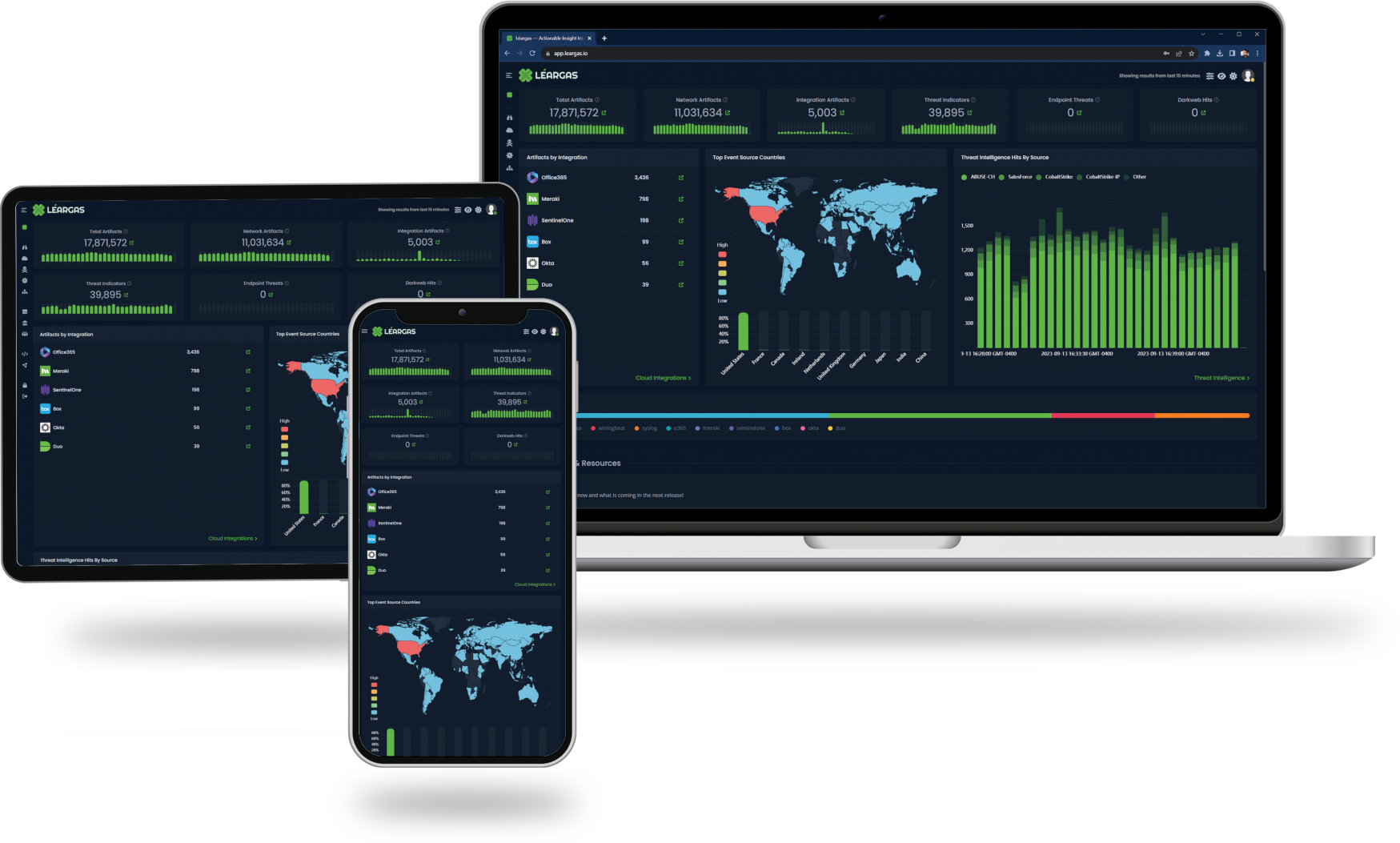
BLOG
Léargas XDR – Defending America’s Critical Infrastructure

In 2014, the pressing need for a comprehensive cybersecurity solution to the vulnerabilities faced by nearly 900 electric cooperatives was acknowledged by the U.S. Department of Energy (DOE).
Understanding that the integration of Extended Detection and Response (XDR) solutions in electric cooperatives has become increasingly important in recent years, Léargas was driven to create a versatile and cost-effective platform. As these cooperatives digitally transform and adopt modern technologies, they also become more vulnerable to sophisticated cyber threats. These potential attacks not only pose a risk to the integrity of the cooperatives' data, but also threaten the stability of the electrical grid that powers our communities.
Léargas XDR offers a proactive and comprehensive defense strategy by unifying multiple security products into one platform. This allows for coordinated threat detection, automated response, and continuous monitoring across all network endpoints. The result is a more robust and resilient cybersecurity infrastructure, capable of protecting electric cooperatives from the increasing frequency and sophistication of cyber threats.
Following this recognition, Léargas created the platform Léargas XDR to address these challenges.
So, what are the advantages?
Cybersecurity
Effective oversight of power grids necessitates a thorough comprehension of permissible payload structure and content, which helps identify harmful or irregular activities. Years of focused research allow Léargas XDR to utilize multi-domain situational awareness to promptly signal any anomalies in normal grid and network communications behavior.
As Léargas XDR leverages Zeek for direct protocol analysis, it provides the advantage of custom protocols and detections to tune the defenses to the needs of cooperatives.
Léargas XDR has successfully identified a wide array of vulnerabilities both within the grid infrastructure and communications networks. In response to these detections, it has collaborated directly with utilities, their vendors, and original equipment manufacturers of grid equipment to rectify cyber vulnerabilities spread across their operational technology asset networks.
Operational
When data is transmitted from an endpoint to a Supervisory Control and Data Acquisition (SCADA) head-end, the SCADA processes this information and subsequently issues commands to operational technology (OT) components. However, issues such as network dropouts or misconfigurations can hinder the SCADA's ability to make the right operational decisions.
Case Study: Successful Integration of OT-based XDR in a Mid-Sized Electric Cooperative
Background:
The electric cooperative in question, serving a rural area in the Georgia, was grappling with a multitude of cybersecurity threats amidst an increasingly digital landscape. The cooperative's operational technology (OT) infrastructure was found to be vulnerable to sophisticated cyberattacks, jeopardizing the integrity of data and the stability of the electric grid.
Problem:
The traditional cybersecurity measures employed by the cooperative were incapable of detecting and responding to modern threats effectively. The system was siloed, lacked coordination, and was unable to provide a unified view of the threat landscape across all network endpoints.
Solution:
To counter these threats, the cooperative turned to the Léargas XDR OT-based Extended Detection and Response (XDR) solution. The Léargas XDR solution brought together multiple security products into a unified platform, offering proactive threat detection, automated response, and continuous monitoring across the network.
Implementation:
The cooperative, working with cybersecurity experts, implemented the Léargas XDR solution over a three-month period. The solution was customized to fit the cooperative’s specific needs, integrating seamlessly with the existing OT infrastructure.
Outcome:
The Léargas XDR OT-based solution proved to be transformative for the cooperative. It led to the detection of a wide range of previously unidentified vulnerabilities in the cooperative’s OT network. Moreover, it streamlined the process of responding to threats and reduced the overall time from detection to response.
In one instance, the Léargas XDR solution detected a sophisticated ransomware attack targeted at the cooperative's critical infrastructure, enabling the security team to thwart the attack before any damage was done.
Conclusion:
The successful implementation of the Léargas XDR OT-based solution in this electric cooperative demonstrated the immense potential of such platforms in enhancing cybersecurity measures. By providing a unified and comprehensive threat detection and response platform, Léargas XDR can substantially improve the resilience of electric cooperatives in the face of escalating cyber threats.
MORE FROM THE BLOG
SCHEDULE YOUR LÉARGAS XDR DEMO NOW
Take a proactive stance in safeguarding your digital assets.
SOLUTIONS FOR ANY SECTOR
Tailored Security Excellence for EMCs, Enterprises, Government, and MSSPs
Whether you're an Enterprise seeking fortified defenses, a Government entity safeguarding national interests, an EMC with vital assets to protect, or an MSSP looking to empower clients with cutting-edge security, Léargas has crafted specialized solutions for you.

© Copyright Léargas Security. All Rights Reserved.





